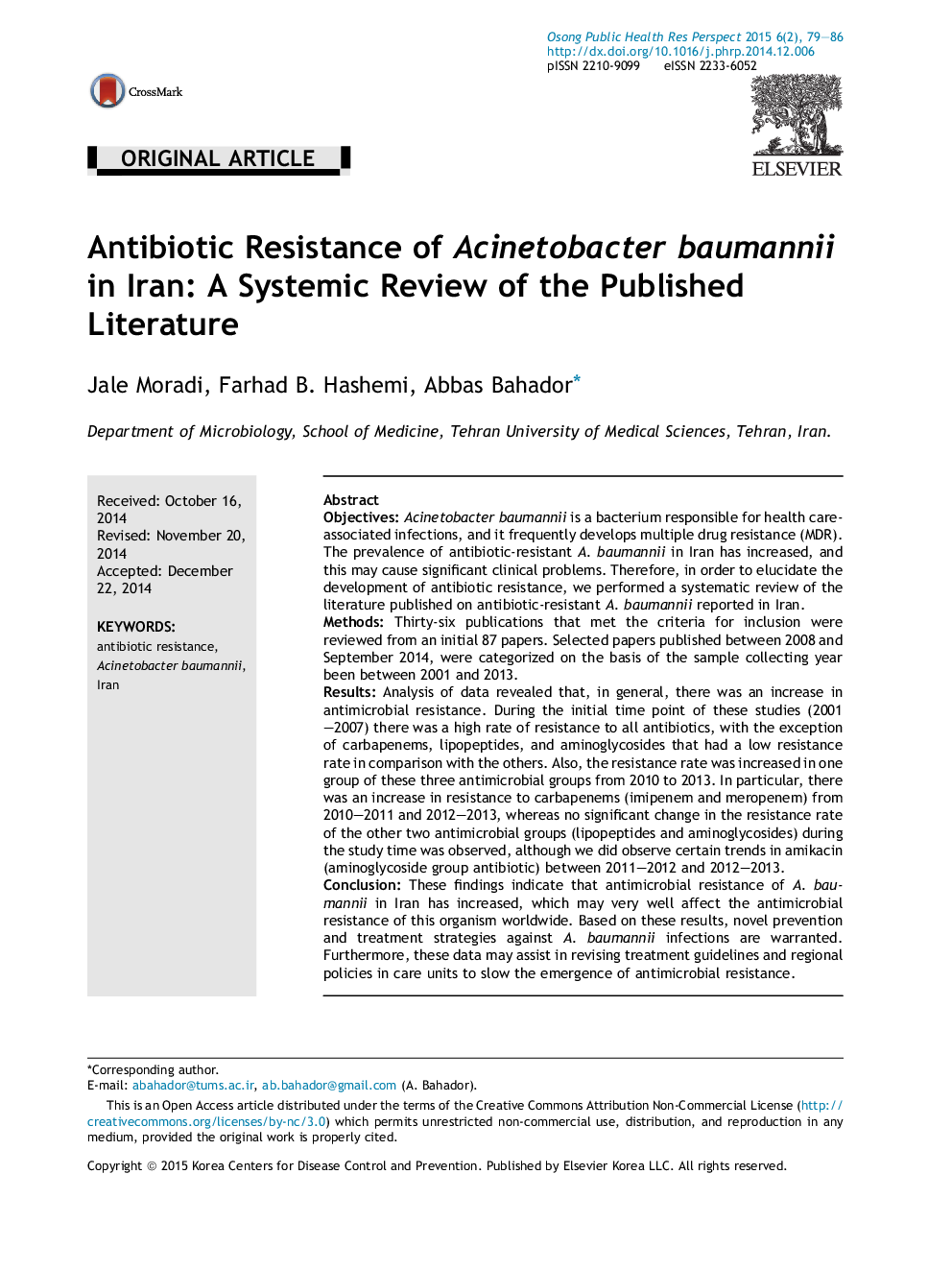| Article ID | Journal | Published Year | Pages | File Type |
|---|---|---|---|---|
| 4201989 | Osong Public Health and Research Perspectives | 2015 | 8 Pages |
ObjectivesAcinetobacter baumannii is a bacterium responsible for health care-associated infections, and it frequently develops multiple drug resistance (MDR). The prevalence of antibiotic-resistant A. baumannii in Iran has increased, and this may cause significant clinical problems. Therefore, in order to elucidate the development of antibiotic resistance, we performed a systematic review of the literature published on antibiotic-resistant A. baumannii reported in Iran.MethodsThirty-six publications that met the criteria for inclusion were reviewed from an initial 87 papers. Selected papers published between 2008 and September 2014, were categorized on the basis of the sample collecting year been between 2001 and 2013.ResultsAnalysis of data revealed that, in general, there was an increase in antimicrobial resistance. During the initial time point of these studies (2001–2007) there was a high rate of resistance to all antibiotics, with the exception of carbapenems, lipopeptides, and aminoglycosides that had a low resistance rate in comparison with the others. Also, the resistance rate was increased in one group of these three antimicrobial groups from 2010 to 2013. In particular, there was an increase in resistance to carbapenems (imipenem and meropenem) from 2010–2011 and 2012–2013, whereas no significant change in the resistance rate of the other two antimicrobial groups (lipopeptides and aminoglycosides) during the study time was observed, although we did observe certain trends in amikacin (aminoglycoside group antibiotic) between 2011–2012 and 2012–2013.ConclusionThese findings indicate that antimicrobial resistance of A. baumannii in Iran has increased, which may very well affect the antimicrobial resistance of this organism worldwide. Based on these results, novel prevention and treatment strategies against A. baumannii infections are warranted. Furthermore, these data may assist in revising treatment guidelines and regional policies in care units to slow the emergence of antimicrobial resistance.
